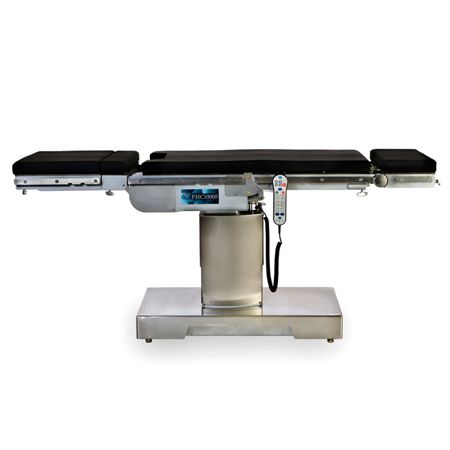
When most medical professionals think of surgical tables, they often only think of general surgery tables, but there are actually several different types of surgical tables.
Here are five types of surgical tables:
1. General Surgery Tables
This is the basic surgery table most people think of. A few good things to look for in a general surgery table include:
- Accessibility – Doctors need the ability to adjust the height in order to gain access to the patient comfortably. Angle adjustment capabilities can also help the doctor reach the surgical area more comfortably and safely.
- Stability – Positioning placement and precision are critical to delivering the right dosage of anesthesia. Therefore the surgical table must be steady and cannot sway or move if the patient’s shift positions.
- Imaging Support – Surgeons are increasingly using minimally invasive laparoscopic procedures, making imaging support more important. A general surgical table should include imaging support features.
- Support for larger patients – One of the realities of 21st-century surgery is an increased rate of obese patients. Quality surgical care shouldn’t be limited by the maximum weight allowances of surgical tables. The standard table should, at minimum, be able to support a patient weighing 300 pounds (136 kg).
2. Imaging Tables
While general surgery tables provide a certain level of imaging support, the most advanced medical imaging procedures require specialized tables. When selecting an imaging table, it’s important to find one that allows the performance of imaging methods such as:
- Any type of fluoroscopy, including vascular procedures
- Any procedure requiring a catheter tray extension, such as cardiovascular procedures
- Procedures requiring lateral/longitudinal float, Trendelenburg/reverse Trendelenburg, lateral tilt or height adjustment
- Specialized 3-D imaging
3. Neurology Tables
Neurological procedures are all about precision. Therefore, neurology tables should offer the best possible patient access with exceptional positioning, which will allow doctors to perform these surgical maneuvers.
Additionally, our neurology tables provide the following specific features:
- A wide range of positioning options, such as a back section, lateral slide and tilt, longitudinal slide, Trendelenburg and elevation options
- Electro-hydraulic operation that’s easy to learn, with manual controls for positioning the head and back section
- Precise foot-controlled tabletop slide functions, allowing surgeons and medical staff to make delicate movements hands-free
Surgeons should have the ability to offer input on a neurology table’s complete configuration and optional attachments or accessories.
4. Urology and Cysto Tables
Urology surgical tables and cysto specialty surgical tables are designed to give surgeons, doctors and other medical professionals access to their patients for delicate procedures.
Advantages of surgical tables designed specifically for urology and cysto procedures include:
- Maximizing access to the C-arm during imaging
- Excellent positioning for seed implantation
- Radiolucent extension used in brachytherapy treatment
Future Health Concepts manufactures surgical and operating room tables that are built for today’s procedures and patients. Understanding that hospitals and surgical centers need medical equipment that is versatile and will meet the demanding needs of modern medicine is critical.
To find out more about our product options, including new and used equipment, call us today at 1-888-282-8644. We will work to try to exceed your expectations when it comes to equipment needs to develop a long-term relationship with your facility.